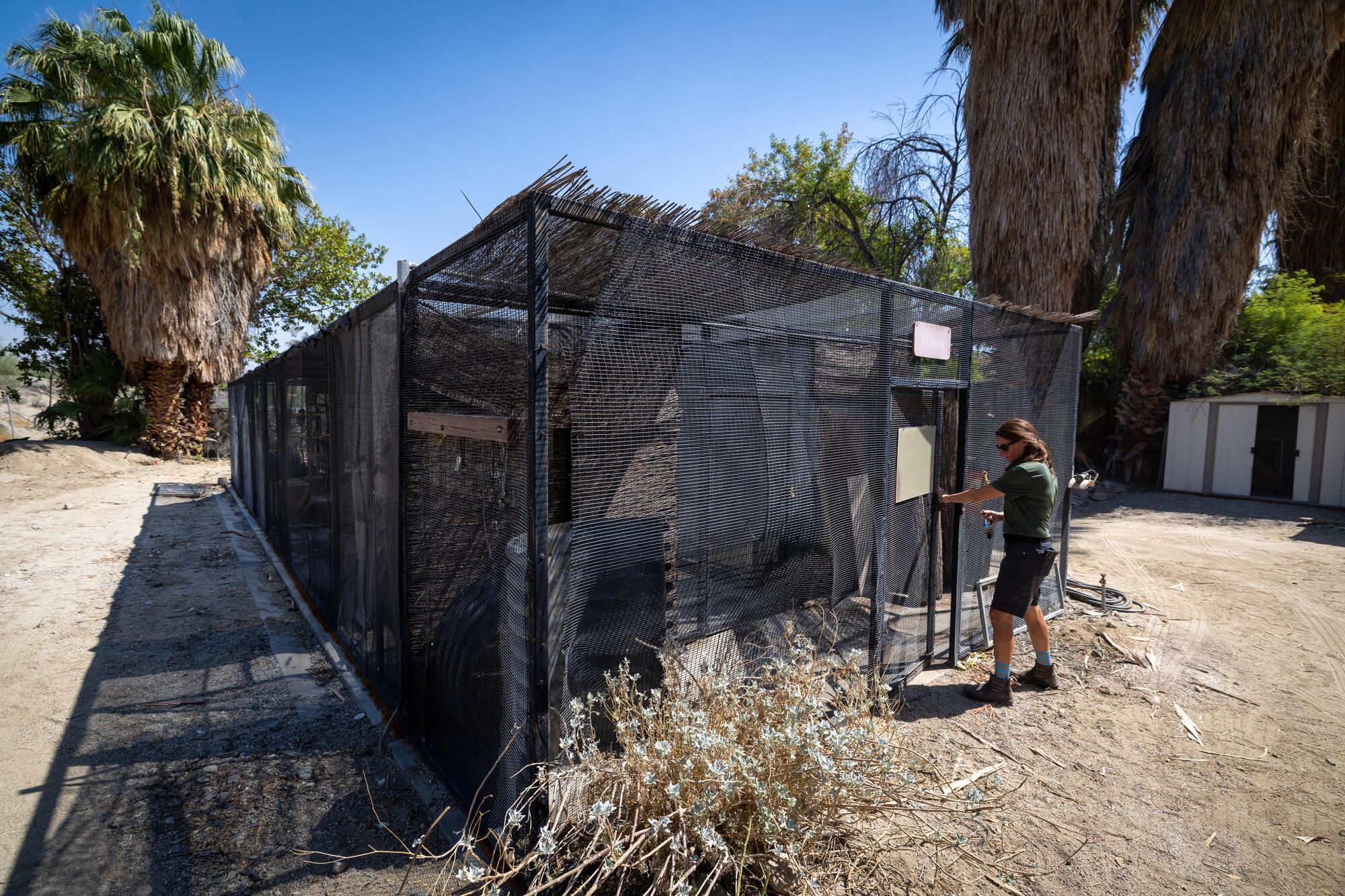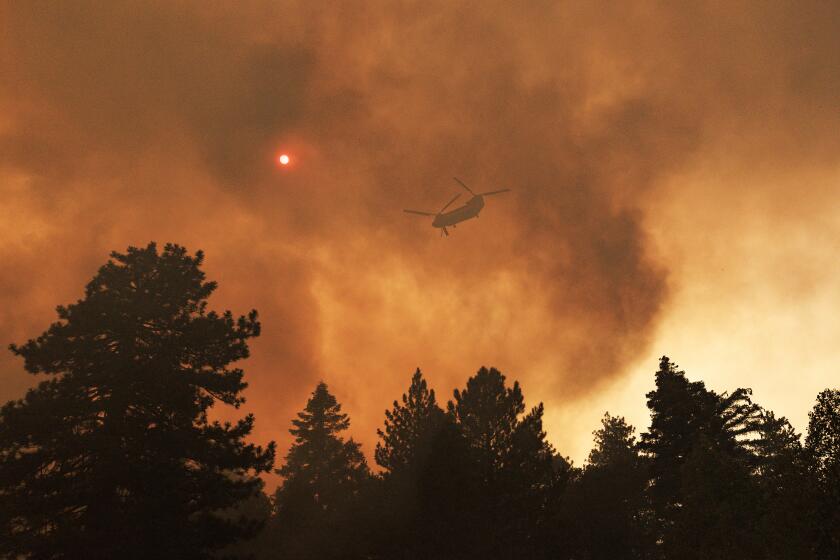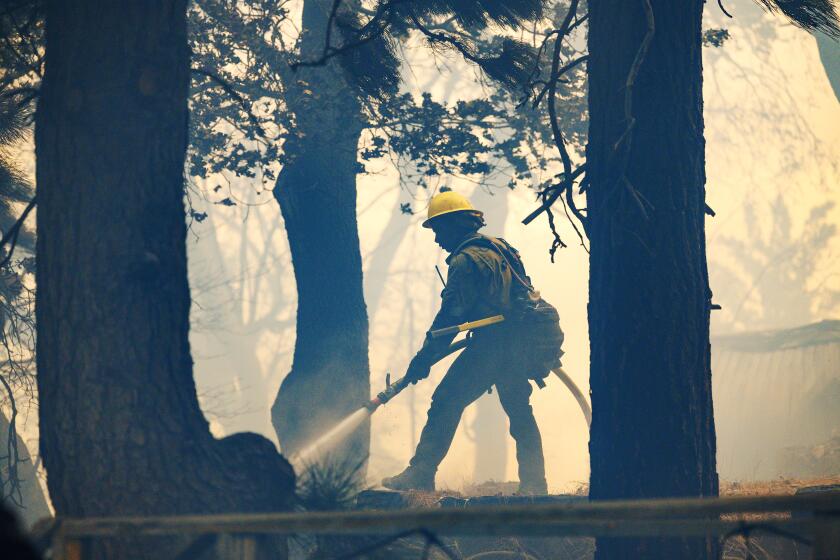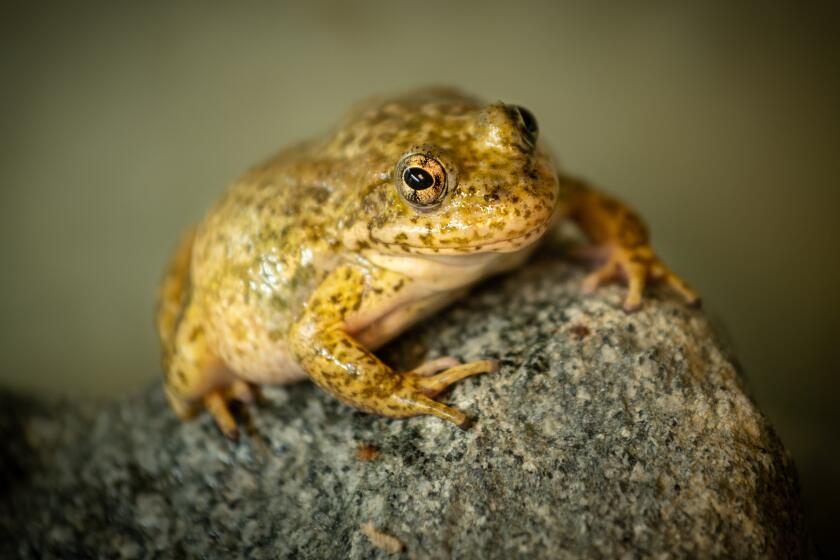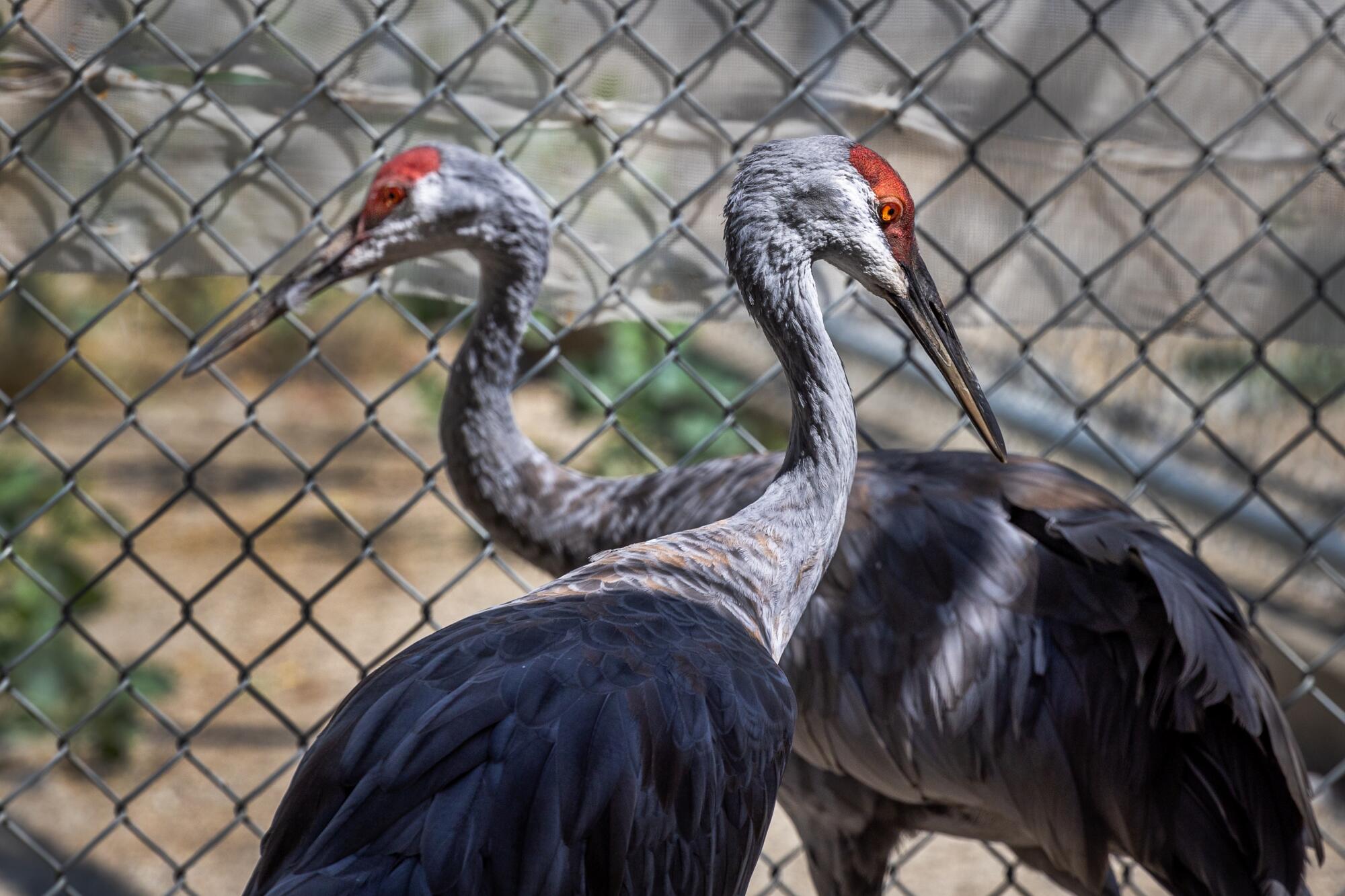
- Share via
PALM DESERT — A motley crew of evacuees fled from a California wildfire last week.
There were amputees and orphans. One was brittle-boned and mostly blind; another was missing a spleen. They made their way down from the San Bernardino Mountains to sunny Palm Desert, where they found temporary homes in enclosures shaded by desert willows and fan palms.
The 50 or so birds and small mammals were displaced from the Big Bear Alpine Zoo, which houses rehabilitated animals that are unable to be released into the wild. As the zoo came under threat from the 39,000-acre Line fire — which resulted in some of the most hazardous air quality recorded in Southern California in nearly 35 years — staffers were forced to launch a delicate rescue operation that saw a caravan of vans and trailers snake down Highway 18 carrying crates of eagles, owls, skunks and cranes.
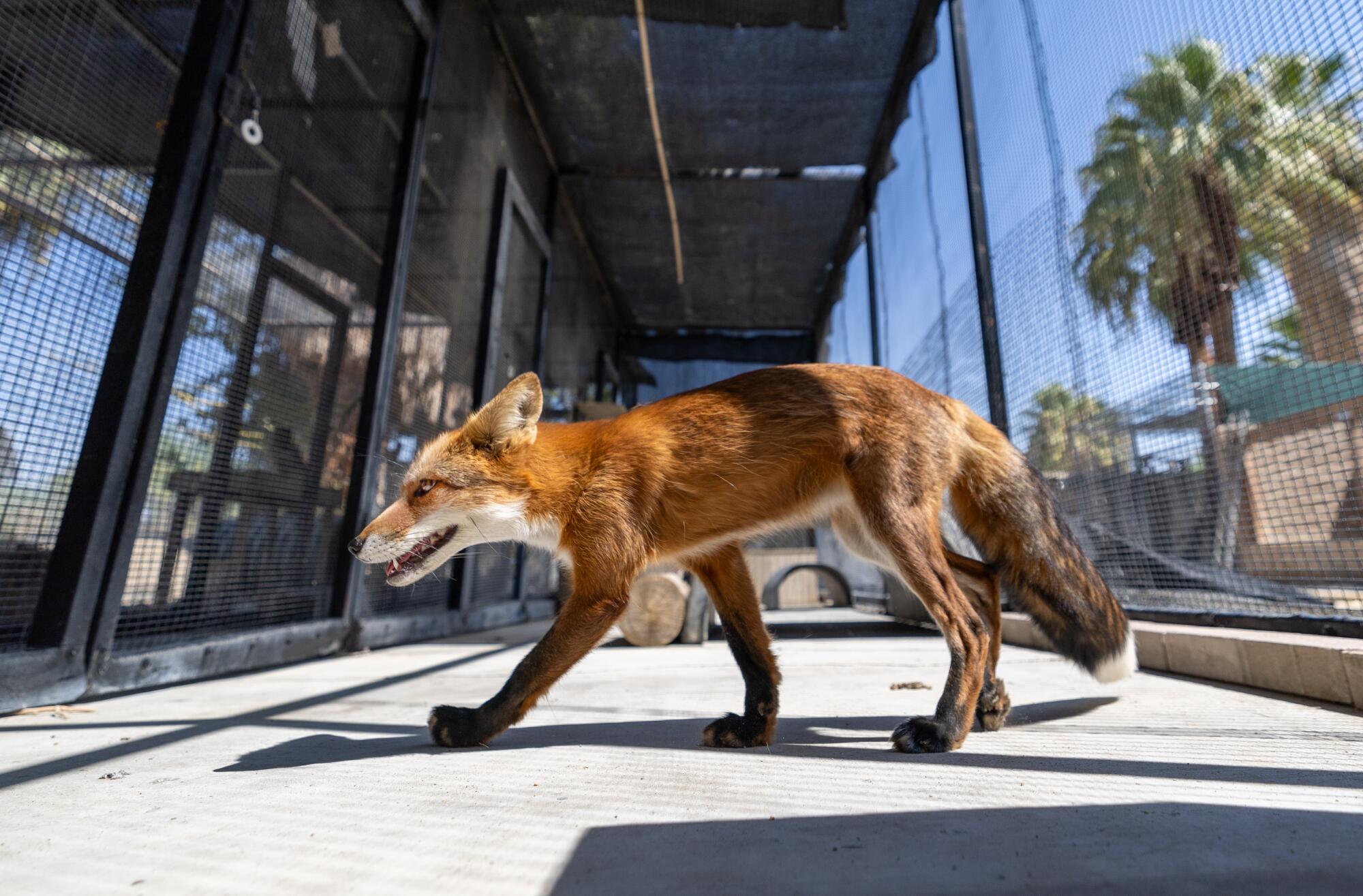
“I had two foxes in the back of my personal car,” said zoo curator Jessica Whiton. “It’s not ever going to smell the same.”
The Line fire started Sept. 5 in the foothill city of Highland, in what authorities say was an act of arson. A 34-year-old Norco man has been accused by police and now faces charges in connection with the blaze. He has pleaded not guilty.
The fire raced up into the mountains and was fueled by brush that had been fed by two consecutive wet winters, and then parched by the Earth’s hottest summer on record. The inferno burned so hot that it created its own weather.
Smoke from the Line fire catapulted the air quality index in the California mountain town to several times the maximum healthy level.
Whiton realized it was time to take action Sept. 10, as a portion of Big Bear Lake just west of the zoo was ordered to evacuate. The rest of the town was warned that it was on standby.
The fire filled the air with toxic smoke and ash. Fine particle pollution was off the charts — literally. Whiton took a screenshot of the maxed-out air quality index on her phone. “It had topped off,” she said. “The numbers kept getting higher, but there was no more range on the scale.”
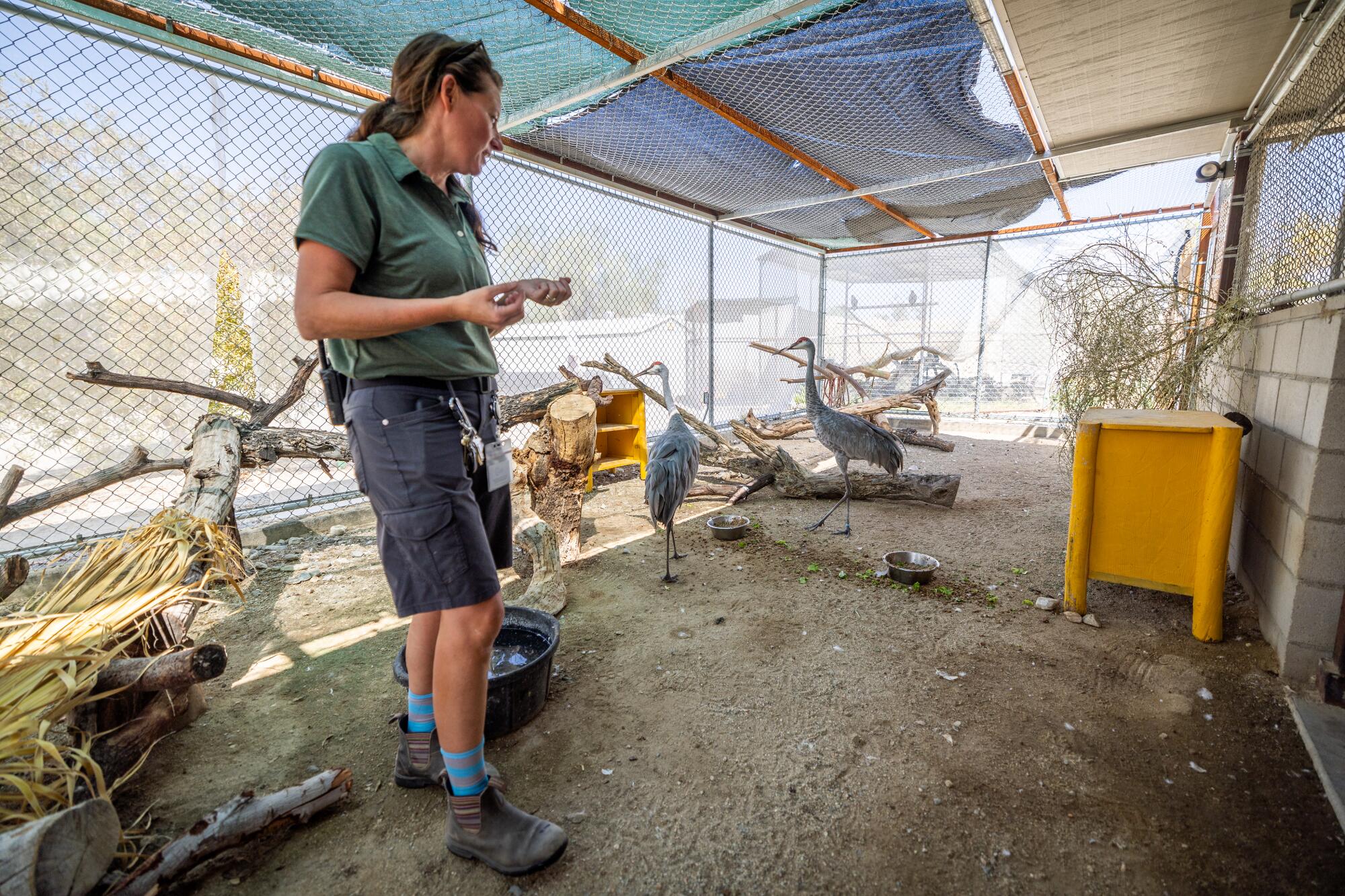
Just like humans, animals can suffer from those conditions. Birds are particularly susceptible because they have a high respiration rate, and it causes them stress to keep them kenneled indoors. “When the air is bad, they tell us, don’t go outside and do strenuous exercise because it causes us to breathe faster,” Whiton said. “Birds are always breathing fast, so smoke can really damage their lungs.”
A team of officials with San Bernardino County decided to employ a contingency plan under which many of the animals would be evacuated to the Living Desert Zoo and Gardens, a nonprofit zoo and botanical garden in the Coachella Valley.
Officials at the desert zoo had been monitoring weather conditions and news accounts of the fire, so they weren’t surprised when they got the call requesting help, said animal curator Heather Down.
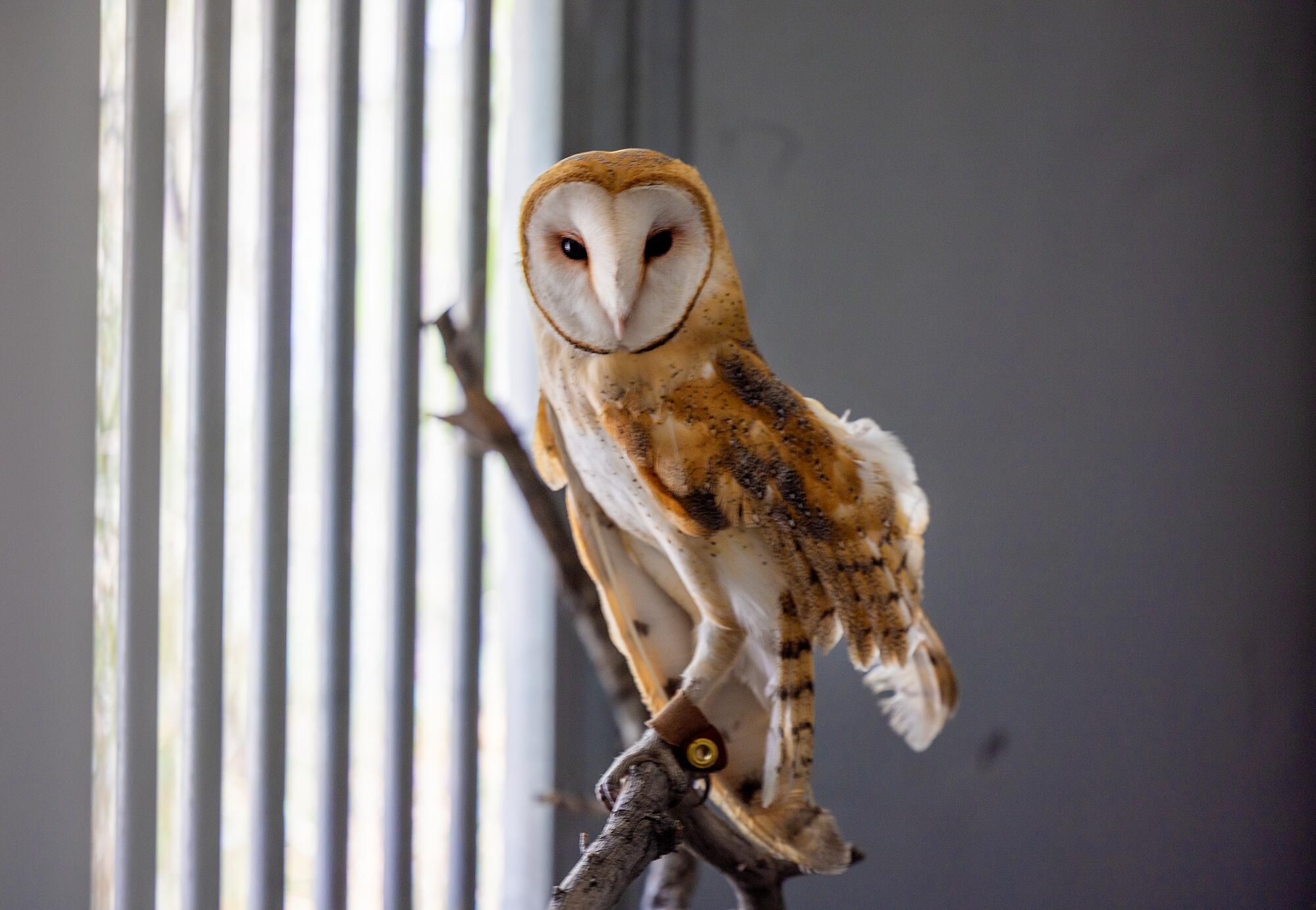
“We put together a tight-knit team and holed up in an office with a big whiteboard,” she said. There, they pored over a list of animals that needed to be housed and mapped out open habitats. “We were able to start placing animals in locations: Who can live with who? Who needs to be independent?” Staffers then got to work preparing the spaces.
The effort took shape quickly: By Wednesday afternoon, staffers had lined up transportation to get the animals off the mountain — a handful of San Bernardino County Animal Care vehicles, plus a trailer operated by a professional animal moving company. The next morning, less than 48 hours after officials made the decision to evacuate, the first group departed on the 21/2-hour trip.
About 26 animals remained behind in Big Bear, including bears, bobcats, mountain lions, snow leopards and wolves. Zoo keepers were able to move them inside, where they were protected by air scrubbers and “beefy” HVAC systems, Whiton said. Still, if conditions were to worsen, there were plans in place to relocate the majority of them to the Living Desert and the remainder to various rescue and rehabilitation facilities.
Running Springs, a mountain town that dealt with a deadly blizzard last year, is now contending with the raging Line fire. But some residents are staying put.
In a back area of the Living Desert, out of the public view, the animals were settling into their temporary accommodations last week. Staff traversed the dirt roads to the enclosures in golf carts and pickup trucks.
One habitat held Niles and Daphne Crane, a pair of arthritic sandhill cranes named after characters from the sitcom “Frasier.” Whiton offered them a snack as Daphne stalked a photographer. “Be nice,” Whiton warned the dinosaur-like wading bird. “She likes to peck shoes.”
In another enclosure, Mozart, a three-legged gray fox with no spleen, peered warily from a tunnel of corrugated tubing. Bootstrap Bill, a kestrel with a partially amputated wing, perched on a branch nearby.
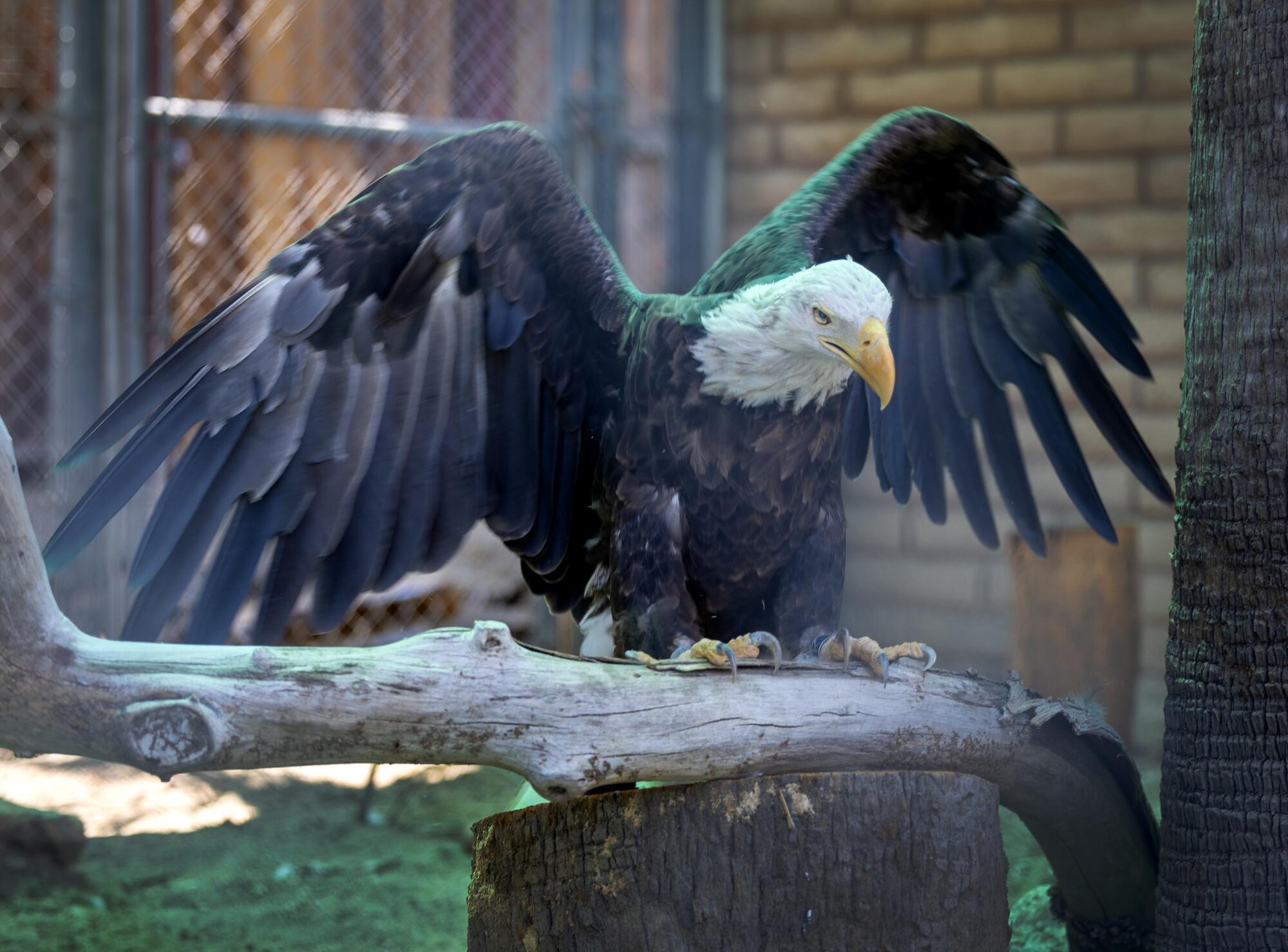
There was Piper, a disarmingly friendly young red fox who was taken in as an orphaned kit, and Valentine, a 26-year-old bald eagle who was rescued from Alaska after DDT poisoning left her mostly blind and with brittle bones.
“Honestly, they’re doing great,” Whiton said. After giving the animals a few hours to adjust to the new digs, with the unfamiliar sights and smells, keepers checked on them and found that most had begun eating right away, she said. “I think they’re happy to have some fresh air and stretch their little legs a bit.”
In the days that followed, the Line fire’s advance slowed. The evacuation order for a portion of Big Bear Lake was downgraded to a warning.
Fires could encroach on critical habitat for the endangered Southern California mountain yellow legged frog.
Still, zoo officials planned to keep the animals at the Living Desert for at least a few more days to allow them to acclimate before uprooting them again.
The effort wasn’t the first time Big Bear’s animals were evacuated to the Palm Desert zoo. They were also moved when wildfire threatened the town in 2002. It probably won’t be the last time either, as climate disasters continue to take place with increasing frequency.
“It sure does seem like this type of thing is going to happen more often,” Whiton said.
The fire was a first for Whiton, a newcomer to California. She moved to Big Bear a couple of years ago from an island off the coast of Iceland, where she witnessed two volcanic eruptions and watched the population of whales surge, then drop off dramatically.
“Just in different places I’ve lived around the world I’ve seen huge changes,” she said. “The Earth is changing and moving.”
